Words in motion
When the bus stops, the show starts.
January 1, 2025 | story by Luena Rodriguez-Feo Vileira
photos by Jack Vincent | illustration by Delia Sauer
This story is from Atrium’s Winter 2024 magazine, which released December 2024.
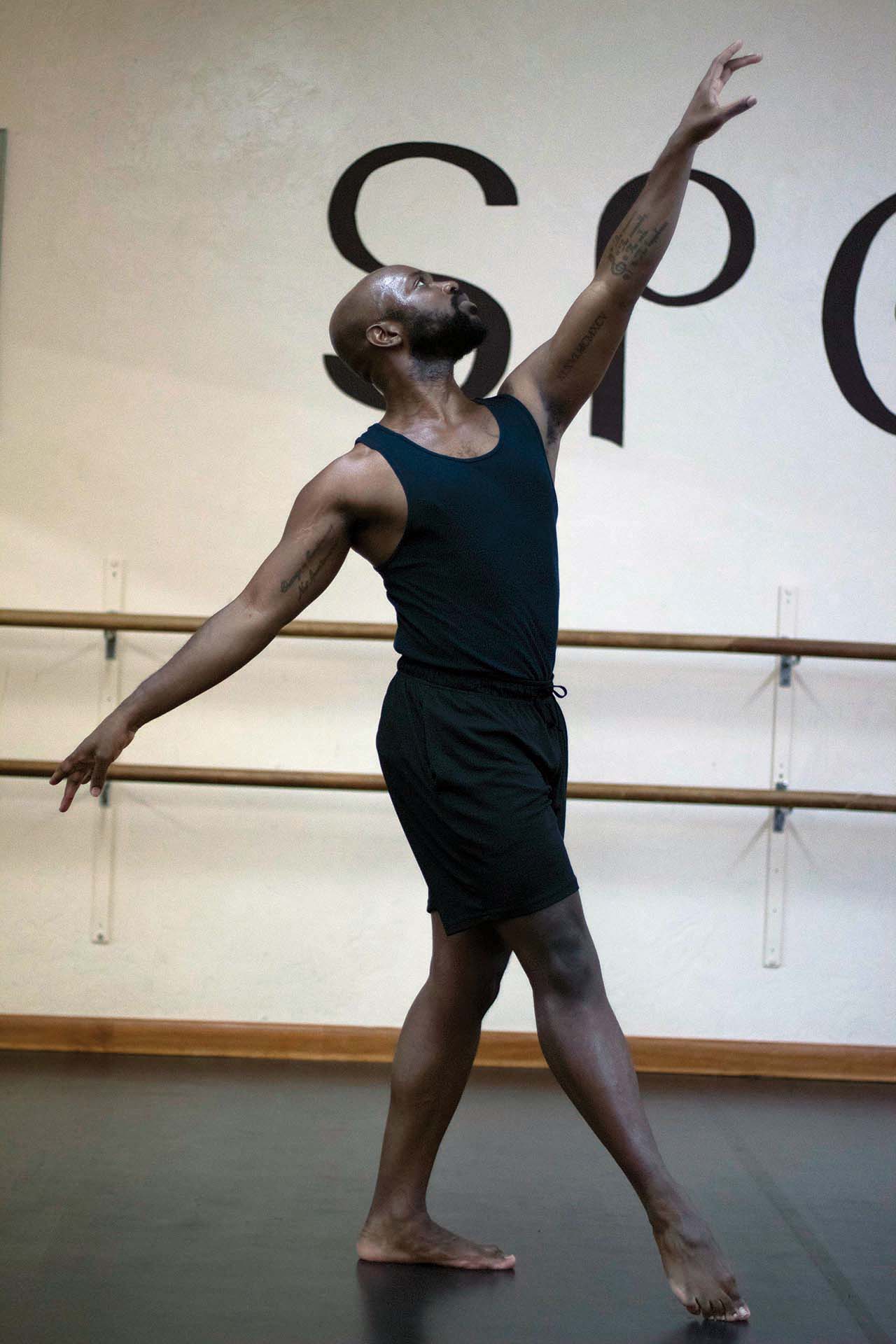
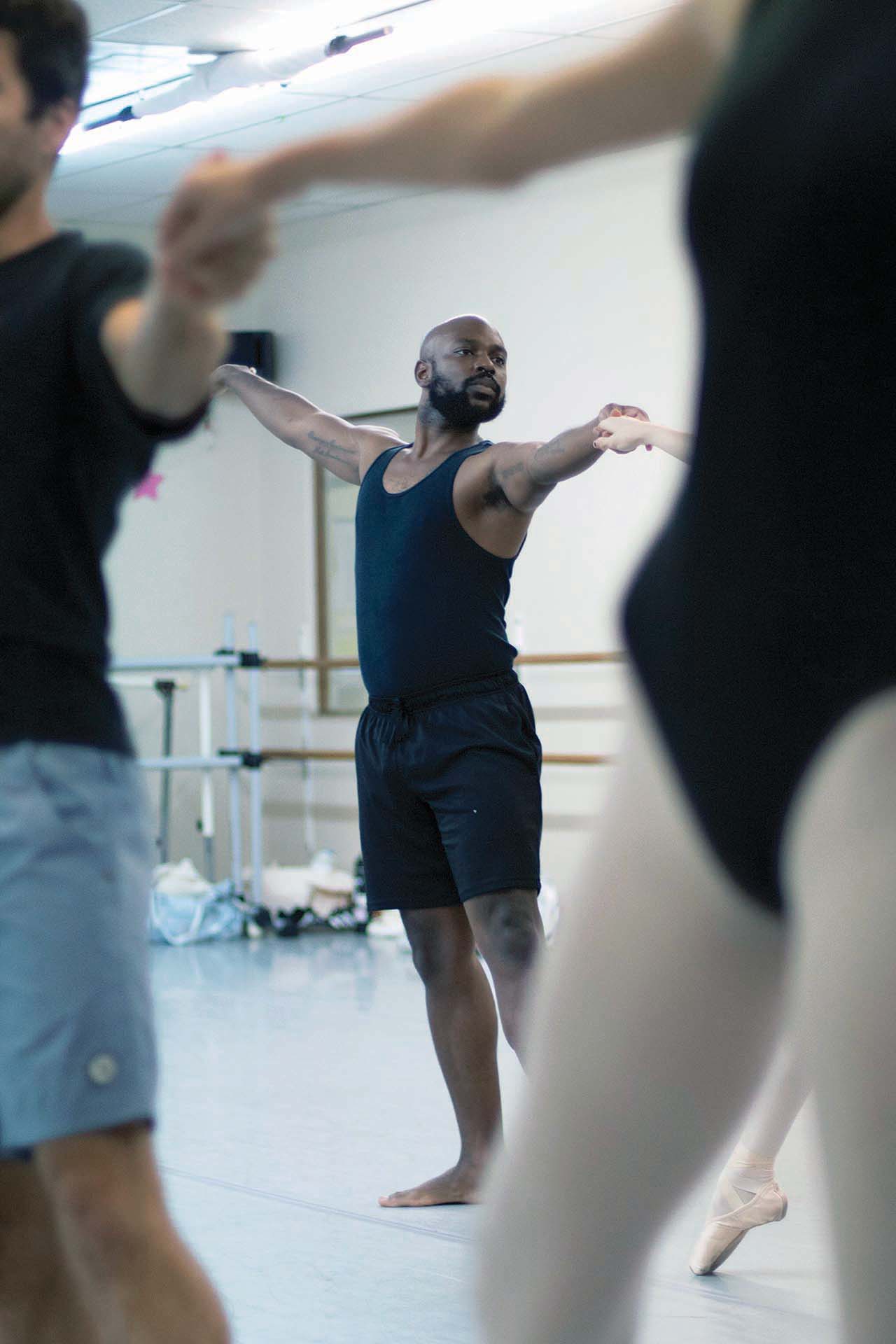
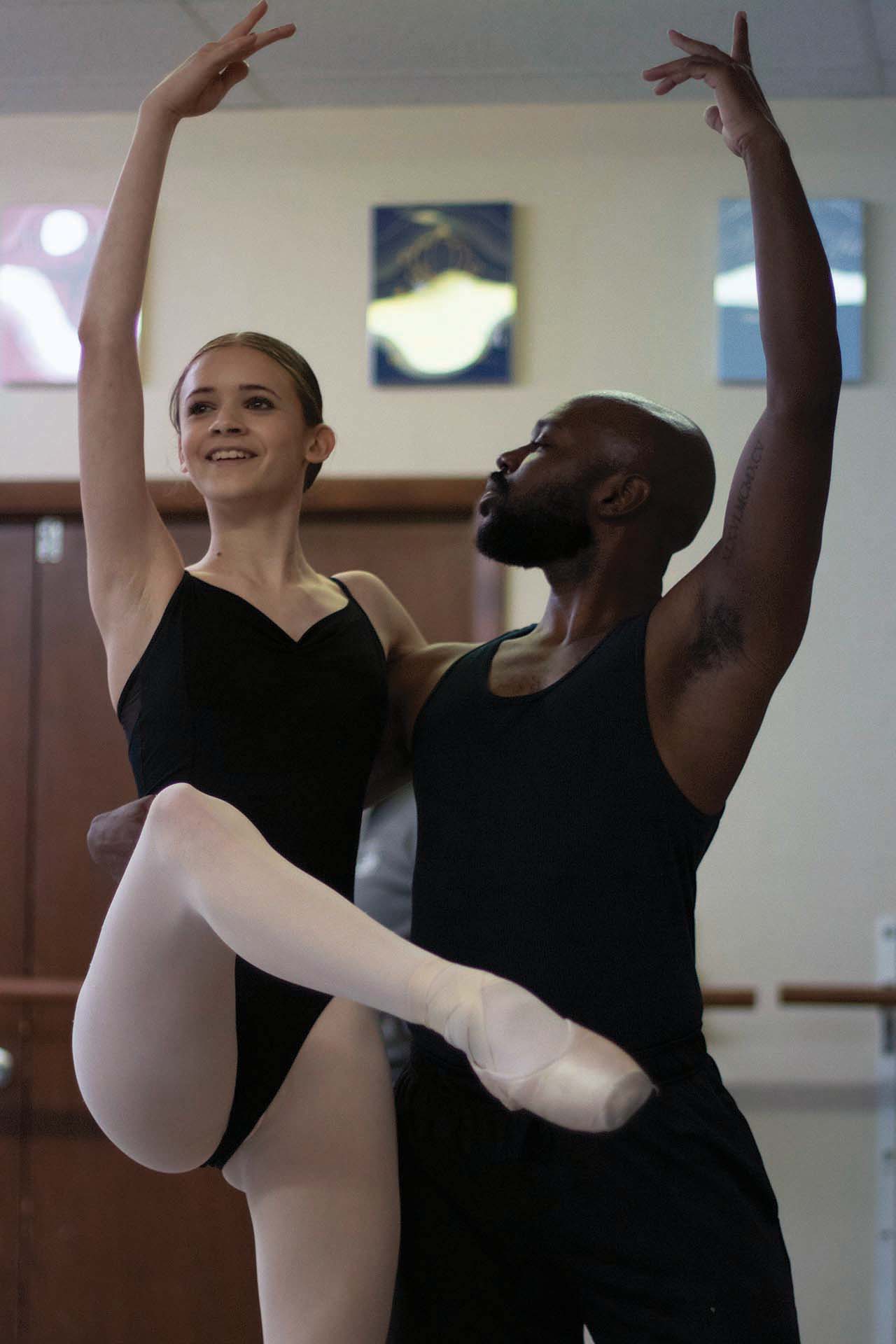
Sahire Mavis outstretches their limbs. “There’s something about ballet, for me,” they said. “I think it’s just about the movement and the dance of it all that just speaks to humanity.” (Jack Vincent/ Atrium Magazine)
Sahire joins the Danscompany performers rehearsing the choreography of Cinderella. (Jack Vincent/ Atrium Magazine)
Sahire and Dancompany dancer Nyla Mottlau, 15, practice their routine together. “Here I am at my later 20s,” Sahire said, “and I’m really just kind of getting into the crux of [ballet].” (Jack Vincent/ Atrium Magazine)
Enter a person, 29 (though they stopped counting after 25), in navy bottoms and a beige polo shirt. They sit in the front-left corner of a bus on Thursdays, Fridays, Saturdays and Sundays, steering the wheel for eight to 10 hours a day. In their role as a bus driver, they have many scene partners but few lines, confined to pleasantries with the passengers rounding the stops. Good morning. Have a nice day.
As passengers board, this driver assesses them for an extra beat, searching for hints of the person, the personality behind the student ID. What book are you reading? Is that an anime graphic tee? In lieu of a detail to compliment — a sample of conversation for anyone willing to bite — they welcome passengers with a wide grin, unfettered by the glorious gap between their own front teeth.
This smile is the first thing you notice about Sahire Mavis when the bus’s smudged two-panel doors part like heaven’s gate. Once you board, you’re free to join the menagerie of strangers riding along with eyes glazed over, lips pressed together and earbuds in, equally preoccupied with where they need to be.
Here, our minds return to their solitary containers, a fishbowl swimming with the details of our days — thoughts that cloud how, if at all, we see through to one another. The haze follows us off the bus and into the day’s routine, making it easy to be served (whatever you picked up for lunch) and shipped (with two-day delivery for your online order) and shuttled (via Uber tonight) by a faceless figure. The further we sink into this role of recipient, accepting actions without actors, the less our urge to be curious of one another, to dip into conversation together, to say thank you and mean it.
“It’s actually quite interesting,” Sahire reflects, “how quiet a bus can be when it’s filled with people.”
Sahire drives for Gainesville’s Regional Transit System (RTS), serving North Central Florida’s most populated city, home to the state’s flagship university. Depending on the day, Sahire transports students living minutes from the University of Florida’s campus and Gainesville locals alike, covering a 6-mile route. In the nine months before Sahire was hired, RTS bused almost 4 million passengers.

And yet, silence. On the shared commute, few bother to say anything. Perhaps some passengers require respite from the day’s relentless studying, speaking, serving, sacrificing and screen time. Perhaps others are mesmerized by the uninterrupted opportunity to scroll through their Instagram feed.
Pause your music, sit close and listen. (Does it carry to the back? Sahire isn’t sure.) Layered over the low drum of the engine, a hum of Sahire’s own. Perhaps hum is too modest. They admit to vocal warmups and songs alike, managing to muffle full-blown musical theater. Now you hear two sources of energy: the one that keeps the bus going and the one that drives Sahire.
The bus driver’s corner is Sahire’s transient stage, where they rehearse for the making of their life.
***
Act One.
Sahire is born and raised mostly in Florida. They’re searching for their voice in adolescence, and they find it in spoken word poetry. When the creative arts keep calling, they answer. They join their high school’s hip hop dance team, then transfer to a performing arts school to train in vocals.
They move to Gainesville in the fall of 2016 and major in musical theater at Santa Fe College. They’re two classes away from getting their associate degree in 2019, but life interrupts, and they never finish.
Act Two.
Now it’s the summer of 2023, and Sahire fills the time with a new career plan: become a medical assistant; move to Los Angeles, California.
For now, Sahire is still in Gainesville, and they could use more income. They’re riding the bus and glazing over the interior ads and — Hey, they’re hiring. Why not? Both their parents drove school buses in Jacksonville. The pay, $16.97 an hour, is decent enough. They’ve never dreamed of being a bus driver, but they need a roof over their head and food for themself and their two dogs to be able to dream at all.
So, they accept the intermission. The creative arts, by way of necessity, take a backseat. But Sahire can never truly close the curtain on their craft.
Sometime between the first stop on Sahire’s route and the loop back around again and again, creativity shoots out from the crevices of their mind like the plants sprouting unexpectedly between cracks in the sidewalk. Their best ideas, in fact, come at work. Story material, character developments, poetry sections and ending lines — never too much to distract from driving but enough for Sahire to pocket some joy for the ride.
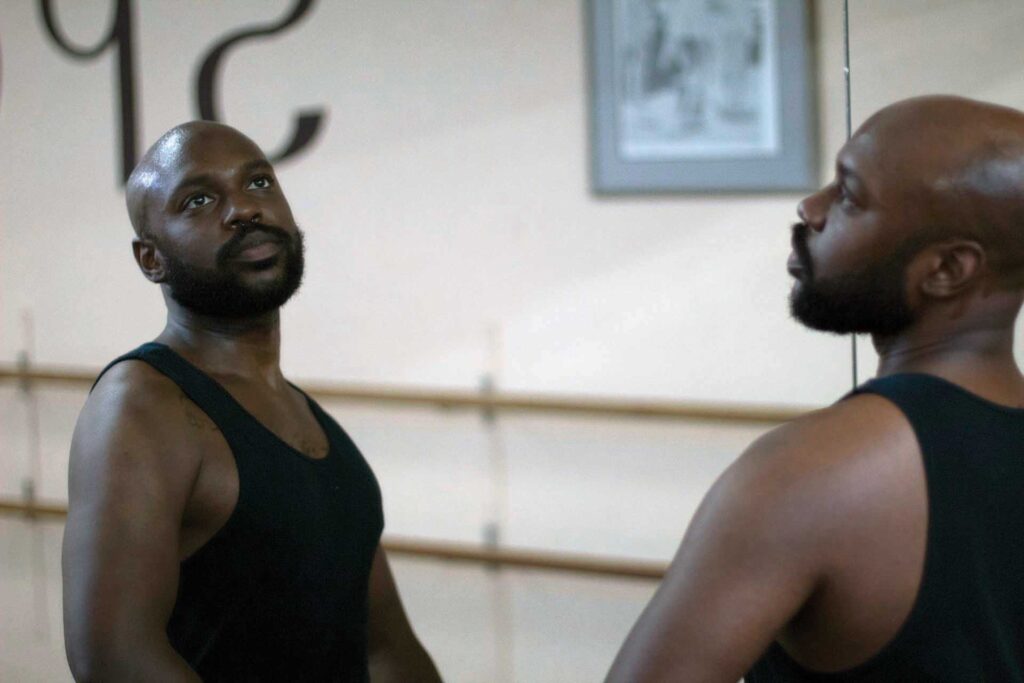
Like Sahire, the passengers on their bus retain traces of the outside world when they board, packing along their pleasures and pains, the matters of their lives. This context is constructed perpetually offstage from Sahire, who knows they are bound to a revolving door of travelers by nothing but a briefly shared moment in time.
Sahire recounts, a few weeks ago, a student was crying on the bus. No one was checking on him. He gets off the bus but not before Sahire can tell him, “I don’t know what’s going on, but I hope it gets better.” The student replies, “Thank you. I just found out my dad died.”
“I know my words really didn’t mean much in comparison to what he was dealing with,” Sahire says, “but it helps.”
Sahire still remembers what it felt like in college, charting the course of your personhood while steering between family and career, treading unsteadily along what seems like the only path to the rest of your life. The growing pains of young adulthood, Sahire calls these, intensified by the absence of stable community, relationships and support.
“We grow up in whatever dynamic we are raised in because we had no choice,” they say. “Now you’re in a situation where you have nothing but choices to make.” What kind of person do you want to be? What kind of individuals do you want to be surrounded by?
Sahire answers these questions for themself: “I know that I drive a bus, but I don’t see myself as a bus driver,” they say. “I am so many other things.”
Sahire won’t identify as a writer or a singer, despite a passion for both. No, they don’t just do the arts. They are in love with them. It’s not a job Sahire can clock out of. It’s a perpetual state of being, one that draws them deeper into admiration, learning, yearning.
Ideas don’t just sit in Sahire’s head. Ideas find a home in the folders on their phone and laptop, or between the pages of the brown, faux-leather journal they keep on them, always with a pen. Sahire doesn’t identify with their mom’s Christian faith anymore but still clings to a couple lines of scripture, remembered as her advice: Write the vision. Make it plain.
And they do, with a catalog of short stories, a poetry collection in the works and the early outlines of a fantasy adventure manga. (That last one will take more than just writing. To complete it, Sahire is teaching themself how to draw.)
“How can I connect more with the craft?” Sahire asks. The craft, Sahire’s code for any creative art, finds its way back to them through dance.
***
Enter an artistic director. Picture her in the right place (choreographing Cinderella, a full-length ballet) with the right job (with the performing group Danscompany) at the right time (in need of dancers). In 2023, the show was turning 30, and Jeri-Lynn Rapczak was turning 40. For as long as the show has been around, Jeri-Lynn has been with the studio producing it, since her first dance class there as a child.
She hears about Sahire in July from a Santa Fe dance professor who choreographs for Danscompany and remembers them from the college’s spring shows.
“They’d be great for Danscompany,” the choreographer tells Jeri-Lynn. She takes Sahire’s number.
Cut to an invitation: “Join us for the studio’s summer intensive, Sahire.” The offer is a warmup to the company’s people as much as its performance style.
Jeri-Lynn doesn’t know it, but ballet was always Sahire’s favorite dance class in college (even if they were never the best with all those French terms, between the sissonne, the changement de pieds and the piqué). Years have passed since then, and Sahire’s body, softer and weaker, isn’t in the shape it used to be.
But Jeri-Lynn can tell Sahire has a foundation in dance from their posture, their sense of presence at the bar. Even better, Sahire is eager to learn. Oh, this person is going to be awesome. Go ahead and skip the process of auditioning, then. The guys at the studio would love to take Sahire under their wing anyway, adopting them into a lineage traced not by blood but from coach to dancer. Sahire will play a royal guard. Rehearsals start in September.
In December, the cast pours into the studio for Cinderella’s full run through, a three-hour rehearsal. Seated at the front of the room, Sahire gets their first chance to watch the entire show. Standing at the back, looking through the mirror’s reflection, Jeri-Lynn takes the chance to watch Sahire.
Not their feet or their body but their face.
Jeri-Lynn remembers the sequence of Sahire’s expressions, eyes and mouth pulled into pure excitement. Like watching a child open a present for the first time, she thinks.
At the last dress rehearsal for Cinderella, Sahire stands on stage to do what they do before any performance, drawing soft inhales, taking a moment to be present.
“I felt like I was breathing for the first time,” Sahire realizes. “It was a lifeline that I needed.”
They decide then to end the intermission. They will, by whatever means, make a livelihood from the arts.
When Cinderella is through, Jeri-Lynn knows Sahire’s time with the studio can’t be, no, shouldn’t be over. I just feel like they’re a cool person. I want to be friends. In casual conversation, she learns of Sahire’s love for poetry; Sahire learns of her vision for the studio’s next performance. “I have all these ideas,” she says. “Let’s collaborate.”
By January, an offer: “Join Danscompany for our concert in spring. Let’s incorporate spoken word poetry in a dance number.”
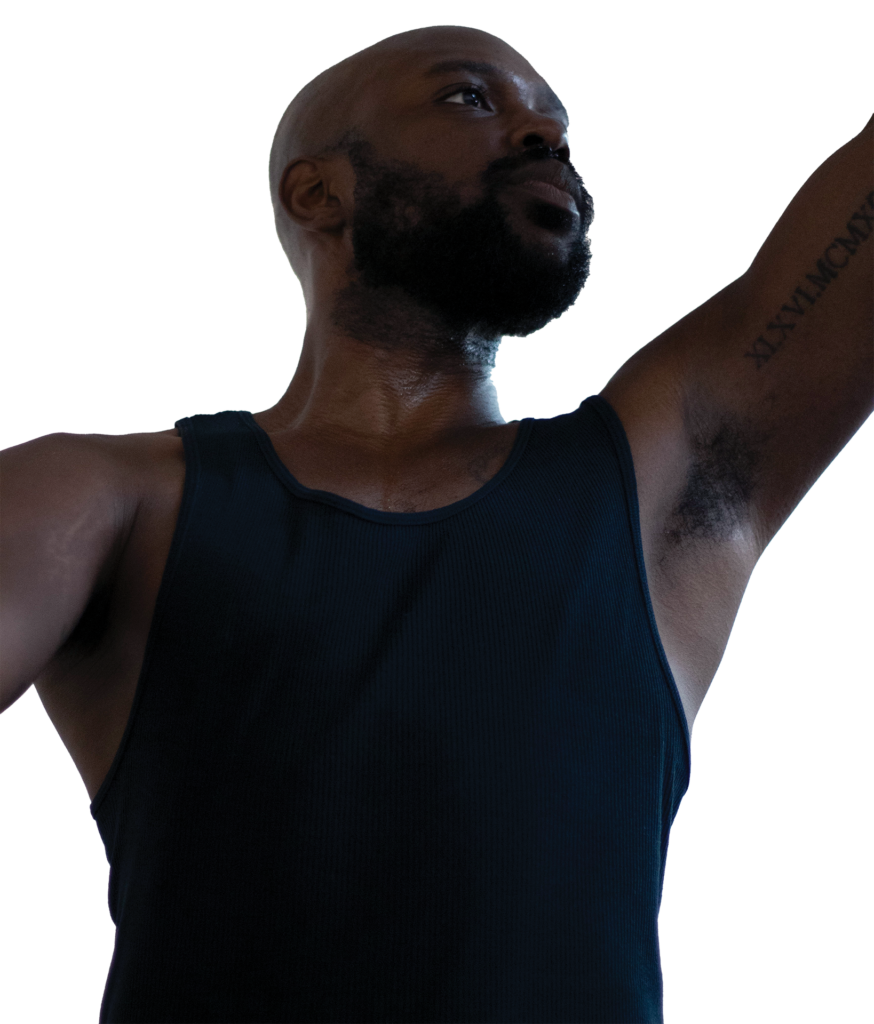
The two work from a shared Google Docs, then a series of in-person talks to develop the writing they’ll include. Jeri-Lynn ends up with 3 minutes and 17 seconds of Sahire’s voice across seven different audio files, reading lines of her writing, lines of Sahire’s and excerpts from “On the Road” by Jack Kerouac.
“Imagine the life of a chameleon, changing colors, blending in,” Sahire begins in the recording. “I liken it to changing of clothes.”
***
Act Three.
Enter a person, off the bus and out of uniform. Inside Danscompany studio, Sahire chats with fellow dancers, lips parted in a smile, blending easy laughter with questions about proper technique. I can’t fear being good at it if I want to be good at it. They run through the choreography repeatedly, panting less each time.
In March, after a work shift, Sahire arrives at the studio for the second-to-last rehearsal. They trade their stiff polyester polo for a casual tank top, revealing tattoos of a Hakuna Matata symbol on their outer bicep and a musical note on their forearm — details their passengers rarely see. Finally, Sahire’s body and mind can breathe.
At a glance, Sahire’s dark clothing seems like the only feature they share with the dancers seated among them. In the sea of beige bodies in black leotards and tight ponytails, Sahire’s head, hairless and deep bronze, breaks the surface. But after Jeri-Lynn greets the group, “Happy Saturday!” and Sahire cheers the loudest reply, the dancers rise together in a single tide. Sahire, no longer distinguishable, becomes one with them.
The day of the recital, Sahire wakes at a little past 7 a.m. The show is scheduled for 1 p.m., then again at 7 p.m. Nuts, fruit and a veggie sandwich, if necessary, will hold them until then. They spend the hour before showtime squeezing between dancers backstage, carried by waves of chaos as much as ecstasy.
When Sahire hits the stage for their first number (a Star Wars inspired hip-hop routine called “Death Star Twerk Team”), panic blooms in their chest. I think I forgot the steps. Then Sahire blinks from behind their Darth Vader mask, and their body reminds them they don’t have to think; they find their presence in the beat.
Once the curtains close, a voiceover rings through the speakers, signaling the start of a new number. Sahire, reading spoken word poetry in a thick transatlantic accent, is barely recognizable. For the remainder of the spring concert, the sound of Sahire introduces each routine.
After the 1 p.m. show finishes, a dancer’s mom asks, “Is that you on the recording? Do you write?” Sahire says, “Yes,” and the look on her face suggests to them, I had no idea. When the 7 p.m. show comes, Sahire remembers this — all that the audience doesn’t know. That’s my voice. Gratitude rushes from their ears and fills their lungs.
Here is the first craft that spoke to Sahire, who was charmed by a love of words into a love of the arts. Here is their writing, translated into the medium of dance, a language Sahire is still learning.
On the show’s program reads their first credit as an author:
Writer ………………………………. Sahire Mavis
Spoken Word ……………………… Sahire Mavis
“Writing is the friend that hasn’t left me,” Sahire says.
Two days after the performance comes a call from Jeri-Lynn: “Work with me again.” She wants to revamp the narrative theme for the next spring concert together, as writers. It can be even better. I want Sahire to help me make it better.
Exit a bus driver. Enter a creative who, yes, happens to drive a bus. They sit in a familiar location but in a different role, on the bus as a passenger in this scene. They’re riding the route that takes them home, back to feed their dogs and their dreams.
Sahire pulls the cord to signal their stop.
“Thank you,” Sahire says to the driver before stepping off, the two-panel doors closing behind them.
Sahire will reprise their role in the 2024 production of Cinderella. Today, they are working in the medical field and no longer drive for Gainesville’s Regional Transit System.